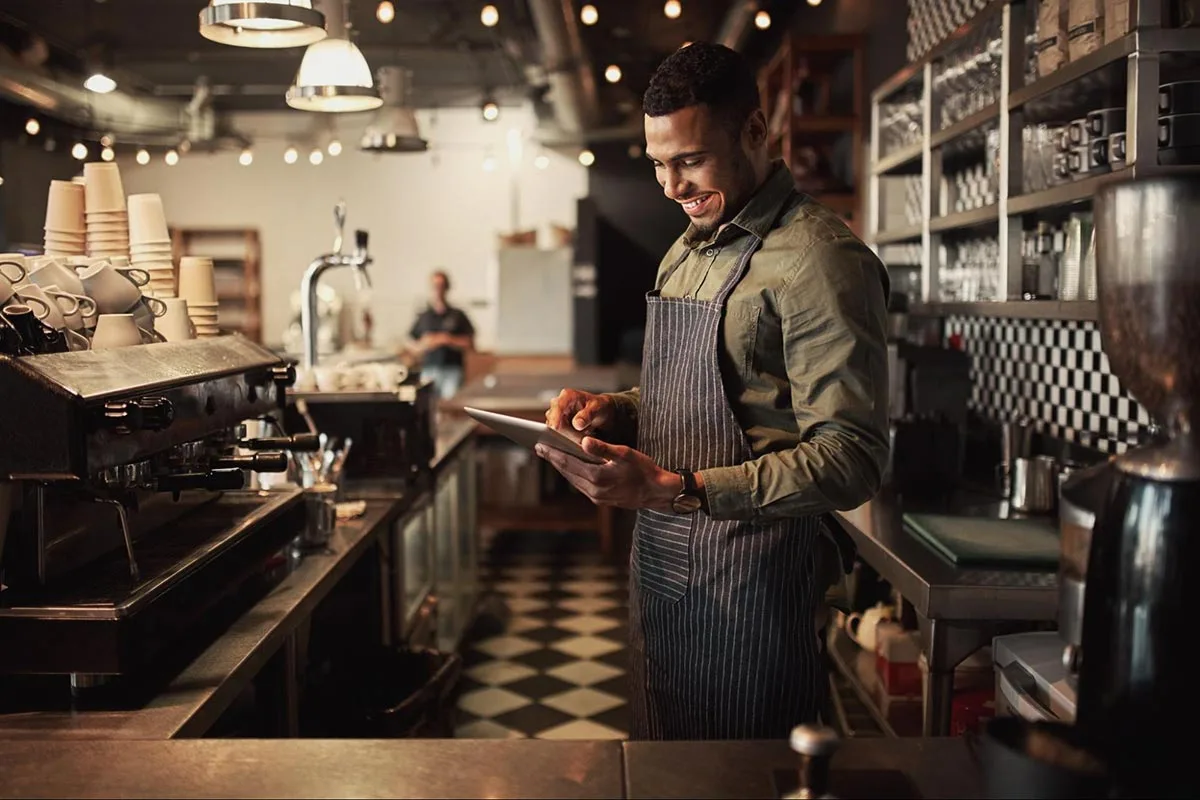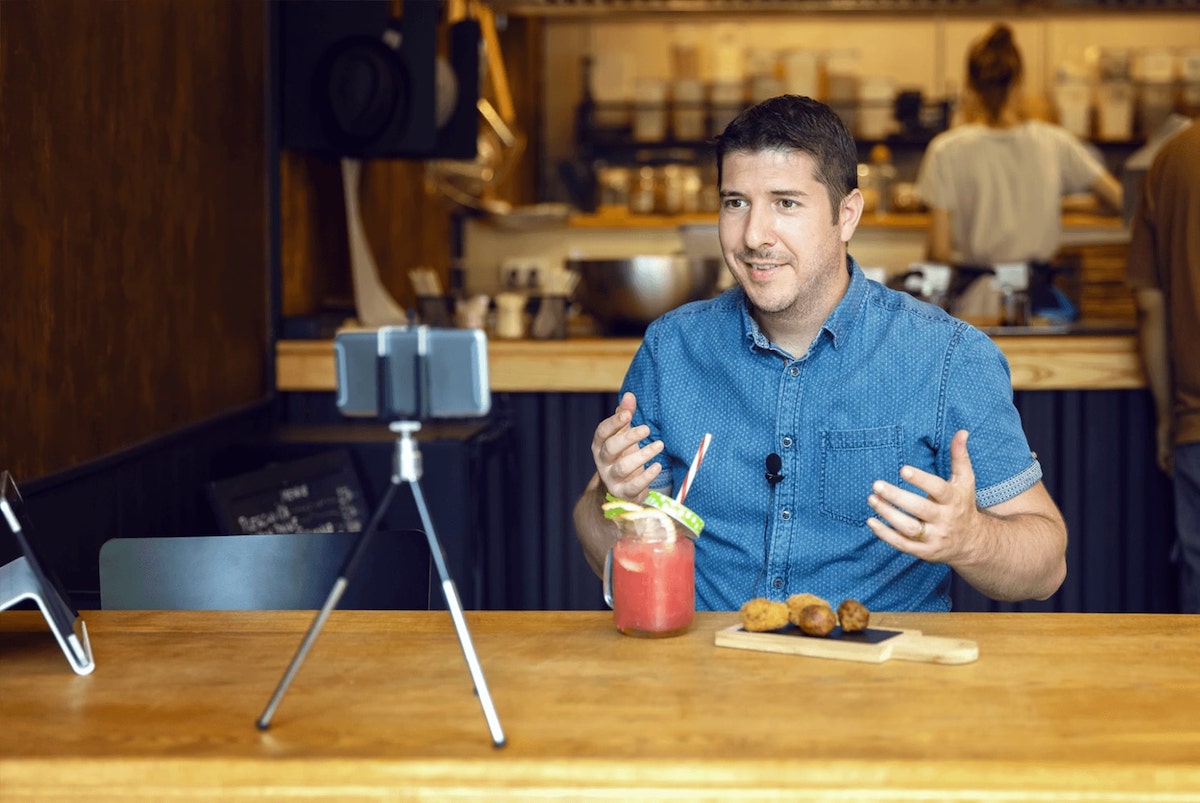14 restaurant marketing strategies to boost sales
Skip the article and turn takeaways into action by scheduling a call with our team.
A strong restaurant marketing plan is vital for growing and maintaining your customer base in the restaurant business. High-quality food, the atmosphere, and the service obviously set the scene for a successful restaurant, but a solid restaurant marketing strategy is ultimately responsible for creating brand awareness among potential customers. Once you bring new customers through your doors, more marketing efforts can turn them into loyal customers and also amplify their voice for word-of-mouth marketing.
Creating a restaurant marketing plan is similar to creating a business plan: It doesn’t need to be a long, formal document but rather a fluid list of restaurant marketing ideas that changes over time to best suit your needs. And while every restaurant has a different dining experience, target audience, and marketing budget, below are 14 winning restaurant marketing strategies all restaurants can use for their in-person and digital marketing.
Before delving into the strategies: Establish your brand

Before beginning any marketing, a restaurant needs to establish its brand. Your brand is more than the customer-facing side of your restaurant—it’s the core identity around which your business grows. A good place to start is by answering these questions:
- Who are we?
- What do we do?
- What makes us unique?
Developing a restaurant brand covers a lot of territory. We’ve discussed restaurant branding in detail previously, but here are some short-form ideas and questions to head down the right path:
- Decide on your brand personality. What niche are you filling, and how does your restaurant fit into it? How do you want customers to see you?
- What is your brand voice? How will you speak to customers in advertisements?
- Create a brand book. This clearly lays out your branding strategy and keeps all employees aligned.
- Consider your market position. What sets you apart from your competitors?
- What design elements make your brand unique? What colors and fonts will you use to match your identity?
- How does your restaurant’s aesthetic reflect your brand, both inside and out?
Having a clear concept of your branding will keep your restaurant marketing strategies coherent and consistent. Consider it the foundation of everything else.
In-person restaurant marketing strategies

Making the most of in-person marketing will get the word out at the street level and help build your customer base from the ground up. Many of these effective restaurant marketing strategies are must-have, cost-effective methods to establish your restaurant in customers’ minds.
1. Have memorable signage
No restaurant should be without good signage. First-time customers will often notice the sign before they note anything else about your restaurant—this is your passive marketing face, projecting your brand into the local consciousness.
Signage need not be overly complicated, but it should be clear and unique. Consider the massive amount of effort that goes into logo design, especially corporate logo design, and you’ll understand how important visual symbols are to a business. For reference, it takes around 5–7 brand impressions for customers to remember a product. So make sure your signage is unique and memorable to etch your name into customers’ memories and drive foot traffic.
Besides your main sign with your name, consider additional signage to convey important messages. Limited-time offers, special offers like a regular happy hour, and new menu items can all find their way onto signage both outside and inside your establishment to get customers in the door and increase sales. Create QR code signs to post in your windows or on a placard outside with links to your online menu, since a menu is the most important piece of information customers have about a restaurant.
2. Construct an attractive exterior
After your signage, customers will notice your restaurant exterior. Really, the customer experience starts here—how your business looks upon first inspection is often the impression customers will keep in their minds.
Here again is where your restaurant branding comes into play. Your exterior should reflect your business model: elegant for fine dining, funky for a local hangout, peaceful and inviting for a family restaurant. If your restaurant patio is street-facing, spruce it up with plants and inviting lighting to create a welcoming atmosphere.
Since many businesses are ditching colorful exteriors, going with vivid colors may help a business stand out and be recognizable. Branded art can make a visual impact and convey the messages you’re trying to get across.
3. Set up partnerships with local businesses
Teaming up with local businesses to create a business coalition can be the rising tide that lifts all boats. If you have friends who operate other businesses in your area, great. Set up channels to market your businesses between each other, starting with flyers and coupons toward the entrance or placed in check holders.
Alternatively, reach out to local small businesses within a short distance from your restaurant and propose such an offer. Restaurants can form collaborations with local bakeries, spas, florists, shops, and breweries—any sort of business that’s not a direct competitor. Ideally, the cross-promotions between businesses will help drive traffic for all coalition members involved and build up brand reputation between them.
4. Host special events
A restaurant that becomes a social hub is more than just an eatery—it’s a pillar of the local community. Being a hotspot for social life means lots of repeat business, which is the lifeblood of any successful restaurant.
Special events can mean a lot of different things, depending on what kind of venue you have and who your target audience is. Some classic ideas include:
- Live music nights
- Trivia nights
- Cooking classes
- Speed dating events
- Charity events
- Art displays
- Wine, liquor, and beer tastings (especially when paired with local drink producers)
- Holiday events
Hosting special events—and doing them well—can cement a restaurant’s reputation as the place to be. Share news about special events with your local business partners and invite them as well, when appropriate, to get the word out.
Digital restaurant marketing strategies
 The crossover between the online world and the offline world gets blurrier every day. In-person and digital marketing strategies are now like the two wheels of a bicycle—you absolutely must have both. Below are some key digital marketing tools to add to your checklist.
The crossover between the online world and the offline world gets blurrier every day. In-person and digital marketing strategies are now like the two wheels of a bicycle—you absolutely must have both. Below are some key digital marketing tools to add to your checklist.
5. Create a restaurant website
Whether you’re opening a new restaurant or have been managing the same place for decades, having a good website should be step one of any restaurant owner’s marketing plan. It solidifies both your online presence and your established place in the restaurant industry.
Restaurants are limited in the way they can display their menu items, specials, and other information on social media platforms. Getting visitors onto your restaurant website allows them to engage with your brand more deeply, as well as make reservations and even place orders.
For a low monthly fee, general build-your-own website platforms make creating a restaurant website simple and inexpensive. For example, BentoBox caters specifically to restaurants and includes features to easily display your menu, phone number, and other essential information.
The best restaurant websites have robust search engine optimization (SEO) techniques. If you have some spare cash in your budget, you could employ the services of an online marketing agency. They can use the skills of SEO food bloggers to drive traffic to your website, helping you to appear on the first page of Google with search terms that reflect your targeted customer base.
A website can generate awareness among people who never would’ve found out about your restaurant otherwise. And if you decide to invest in Google ads, Facebook ads, or any other paid digital marketing, your website will likely be the go-to destination link for those potential customers.
6. Nail your local SEO
Customers who search for businesses like yours—or for your business directly—should be able to easily find you. This is where local SEO comes in. If you’re a pizza restaurant in Denver, expect that customers will often find you by searching for “Denver pizza.” The closer you are to the top of search results, the better.
You can include local SEO terms across your website to drive customers there. However, it’s more likely that customers will find you on a list via Yelp, Google, or other sites like TripAdvisor that provide your location, information, and photos.
Claiming your Yelp profile page is a great start to getting customers in your door via search. So is owning and maximizing your Google My Business page. Make sure all your contact info is available, as well as photos and a full preview of your menu.
7. Use social media platforms effectively
You may be active on social media personally, but creating and managing social media marketing campaigns probably isn’t what you signed up for when you got into the restaurant business. Things are busy enough offline, so it’s important to make social media work as a marketing tool without becoming tied to your mobile device.
Here’s how:
- Prioritize social media platforms used by your target audience: Even the biggest social media platforms differ in their user base. Facebook appeals to an older generation, while TikTok and Snapchat attract a younger audience. Instagram casts a wider net and will likely be one of your go-to social media platforms for its breadth.
- Use a social media scheduling tool: This lets you post to multiple platforms at once, as well as tailor your content to what your customers are likely to be looking for. Consider platforms like Yelp Connect that specialize in social media for restaurants.
- Monitor your engagement, and optimize your posts accordingly: Engagement is the number of likes, comments, and shares you get on each post. Higher engagement means people are more interested in your content and more likely to walk through your doors in real life. If you notice that a particular type of post generates more engagement, create more posts like it.
8. Use Yelp Connect to reach customers who are already interested
 Building your restaurant brand via traditional social media can be difficult, because a lot of people are scrolling away to see what their friends are up to rather than hunting for promotions. Using Yelp Connect offers a less intrusive and more authentic alternative. When people are using the Yelp app, they’re already on a mission to find a local restaurant to eat at.
Building your restaurant brand via traditional social media can be difficult, because a lot of people are scrolling away to see what their friends are up to rather than hunting for promotions. Using Yelp Connect offers a less intrusive and more authentic alternative. When people are using the Yelp app, they’re already on a mission to find a local restaurant to eat at.
Yelp Connect lets you personalize this experience for users by allowing you to share your most current stories. Just made an exciting new hire? Revamped your patio? Starting a new delivery service with online ordering? Have a new menu? Share the information that you know will be interesting, and the algorithm will ensure that both new and existing customers will see your posts.
Make sure your food photos will make users crave your dishes and let your online marketing convert with well-written copy. Then you can check to see who engages the most with your posts with detailed stats. Use this information to target your posts to the demographics showing true interest. Rinse and repeat.
9. Solicit and respond to online reviews
A new iron law of restaurants exists: An online presence in the form of online reviews is now a must-have. Customers can and absolutely do read these online reviews, and they often base their dining decisions on them. Studies show that 46% of customers are influenced to visit a restaurant after reading positive reviews, while 29% are deterred from visiting after reading negative reviews.
Encouraging customers to leave reviews via online platforms like Yelp both builds up a restaurant’s online presence and gives customers an outlet to voice their opinions. Restaurant owners must take these customer reviews seriously and should respond to both positive reviews and negative reviews. The effect of any negative reviews can be mitigated with thoughtful responses.
10. Lean into email marketing
An email list is digital gold for restaurants. Email marketing has an enormous return on investment, estimated to be $36 for every $1 spent.
Over the last several years, email marketing has come a long way, especially with the customer data now available via platforms like Yelp Guest Manager. Restaurants can send out specific offers to repeat customers, for example, by offering incentives around special days like birthdays or anniversaries. Alternatively, sending out messages about new menu items and upcoming special events, or even insights into the inner workings of the business, can all build customer loyalty and appreciation.
Critically, restaurants shouldn’t overwhelm inboxes with emails. Keep email newsletters to once a month or every other week to prevent email fatigue and keep open rates high.
11. Develop a loyalty program
Loyalty programs have evolved a lot in recent years. Far from the punch card “Buy 10, get 1 free” deals of yore, restaurants can now offer a wide variety of affordable digital loyalty programs that offer valuable incentives to keep customers coming back.
A good loyalty program must have the following three attributes:
- It has to be simple enough for anyone to easily understand.
- It has to be respectful of customers’ personal information.
- It has to be fun, memorable, exciting, and tangibly rewarding.
A good loyalty program makes customers feel like they’re part of a special club. Whether the rewards include discounts, merchandise, giveaways, special offers, or anything else depends on your restaurant brand.
12. Make the most of food delivery apps
Food delivery services are booming and are only projected to keep growing. What was a $353 billion market segment in 2024 is set to grow to $500 billion by 2029. In other words, this is one of the fastest-growing trends in dining today.
Customers who browse third-party delivery apps like DoorDash and Uber Eats will see plenty of restaurants they won’t order from immediately—but that they’ll still remember. Putting your menu on these sites helps boost visibility in the digital sphere and gets your name out there to customers who might’ve otherwise never heard of you.
So in addition to being another sales channel, treat food delivery apps like another marketing channel. Post your whole menu online, and include beautiful photos to drive curiosity and get customers ordering from home—and also thinking about visiting your restaurant in person.
13. Work with social media influencers who match your needs

Influencers, or individuals with large, targeted social media followings, are an exciting marketing channel for restaurants. In the same way that a newspaper’s subscribers are more likely to visit you after reading an article about your restaurant, after an influencer posts about their experience dining with you, their followers are more likely to do the same.
But just because someone has a lot of followers doesn’t mean they’ll create effective marketing for your business. Before you give out free meals to influencers in exchange for exposure:
- Look up their profiles and evaluate their engagement: Each post should average 1–5% engagement. In other words, if someone has 100,000 followers and they only get 10 likes per post, there’s a strong chance that most of those followers are fake. A profile of that size should be getting 1,000+ likes per post.
- Tell them the hashtag you want to promote: When you develop a new marketing plan, sharing the hashtag is imperative. Make sure any influencer marketing partners are on board with your brand identity and will use the hashtags you want to include.
- Don’t be afraid to walk away: If an influencer asks for more than you want to deliver or becomes pushy, exit the deal. You don’t need to work with someone who isn’t a good fit.
14. Use Yelp Ads to perfectly target your desired demographic
Paid digital marketing can be an extremely effective way to cultivate new customers. Local search ads find people at the beginning of their customer journey when they’re deciding where to dine. Consider all the times you do a quick Google search when craving a certain type of food. It’s usually the results at the top of the page with good images of food and nice decor that catch your eye, right?
You can pay Google or Facebook to help advertise your restaurant to secure top-of-page placement, but why not start with Yelp? More people visit Yelp than any other review site (178 million unique monthly views per month), and they’re already on the hunt for food, so an advertisement is more likely to convert.
If you can put your restaurant website or Yelp page (once you’ve claimed your business) front and center during that initial search period, you’ve got a much greater chance of getting curious and hungry people to come your way.
When it comes to local search ads, Yelp offers great options for restaurants of all types. Impressions are free, and you only pay when somebody clicks an ad. With daily budgeting built in, a sudden surge of interest won’t break the bank either. You can also choose your target audience, track your results, and more.
Paired with Yelp Guest Manager, ads are powerful. Guest Manager integrates with your Yelp Connect page for better two-way communication with diners. Restaurants that use Guest Manager paired with Yelp Ads experience 87% more traffic on their Yelp business page.
Restaurant marketing strategies to keep your restaurant in the spotlight
If you don’t have a presence online these days, you may as well not exist—it’s essential to create a restaurant website to ensure your online presence is respectable. Other restaurant marketing strategies include managing your time across the various social media platforms and using Yelp Connect to reach out to people who are already interested. Utilize social media influencers to remind people that you have the best restaurant in your area. And remember that Yelp Ads is arguably the best solution for paid advertising, as it has the greatest reach within the restaurant industry.
As you experiment with new restaurant marketing ideas, your workload will likely increase. It’s important to use software to help keep operations running smoothly. Yelp Guest Manager is a software solution that focuses on front-of-house management, helping with bookings and reservations, waitlist management, table management, floor plans, and takeout/to-go orders.
Want to learn more about Guest Manager and see if it’s right for you? Give us a shout for a free demo. It’s a great pathway toward establishing powerful restaurant marketing strategies.